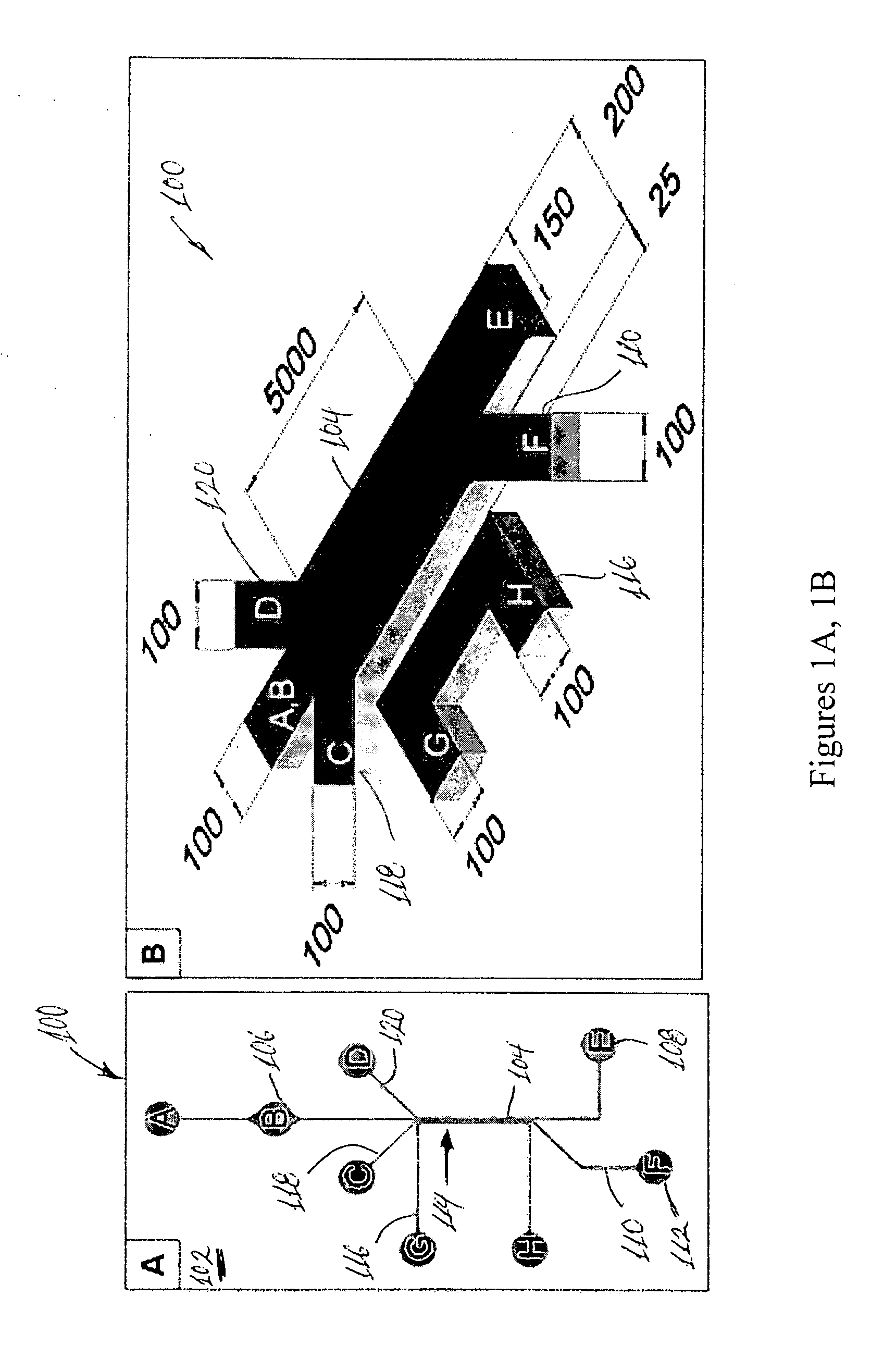Particle-Based Microfluidic Device for Providing High Magnetic Field Gradients
a microfluidic device and magnetic field gradient technology, applied in the field of microfluidic devices, can solve the problems of difficult generation of high magnetic field gradients in micro total analysis systems (tas) and inability to provide continuous separation
- Summary
- Abstract
- Description
- Claims
- Application Information
AI Technical Summary
Problems solved by technology
Method used
Image
Examples
examples
Material and Methods
[0042]Channel fabrication
[0043]Different channel geometries were designed in conventional computer-aided design software and printed out onto a negative transparency mask (PHOTOPLOT, CO). The channels were fabricated using replicate molding techniques. The mold was fabricated using SU-8 negative photoresist (MICROCHEM, MA) on a silicon wafer. The thickness of the mold was ˜50 μm. Then, a polydimethylsiloxane mixture (PDMS), at a composition of 1 to 10 (weight ratio of curing agent to PDMS), was poured onto the mold and subsequently cured at 60° C. for 4 hours. After the curing process, the PDMS replicate was peeled off and punched with inlets and outlets at designated locations. To complete the fabrication procedures, both the PDMS channel surface and a glass substrate were activated by oxygen plasma in order to bond the two surfaces together (see FIGS. 1A and 1B).
[0044]All inlets and outlets are 100 μm in width with the exception of outlet E, which is 150 μm. Th...
PUM
| Property | Measurement | Unit |
|---|---|---|
| magnetic susceptibility | aaaaa | aaaaa |
| concentration | aaaaa | aaaaa |
| magnetic field | aaaaa | aaaaa |
Abstract
Description
Claims
Application Information
 Login to View More
Login to View More - R&D
- Intellectual Property
- Life Sciences
- Materials
- Tech Scout
- Unparalleled Data Quality
- Higher Quality Content
- 60% Fewer Hallucinations
Browse by: Latest US Patents, China's latest patents, Technical Efficacy Thesaurus, Application Domain, Technology Topic, Popular Technical Reports.
© 2025 PatSnap. All rights reserved.Legal|Privacy policy|Modern Slavery Act Transparency Statement|Sitemap|About US| Contact US: help@patsnap.com



